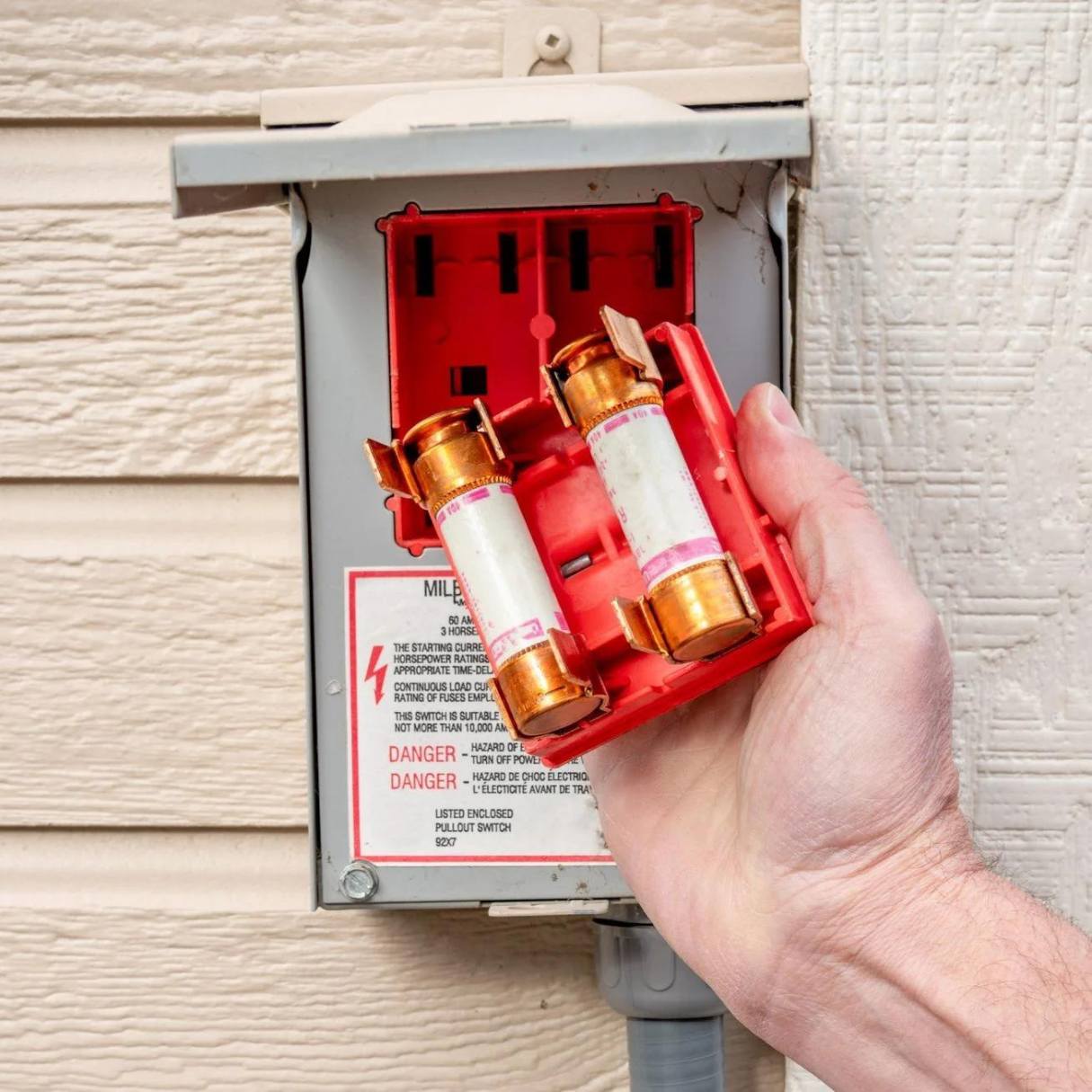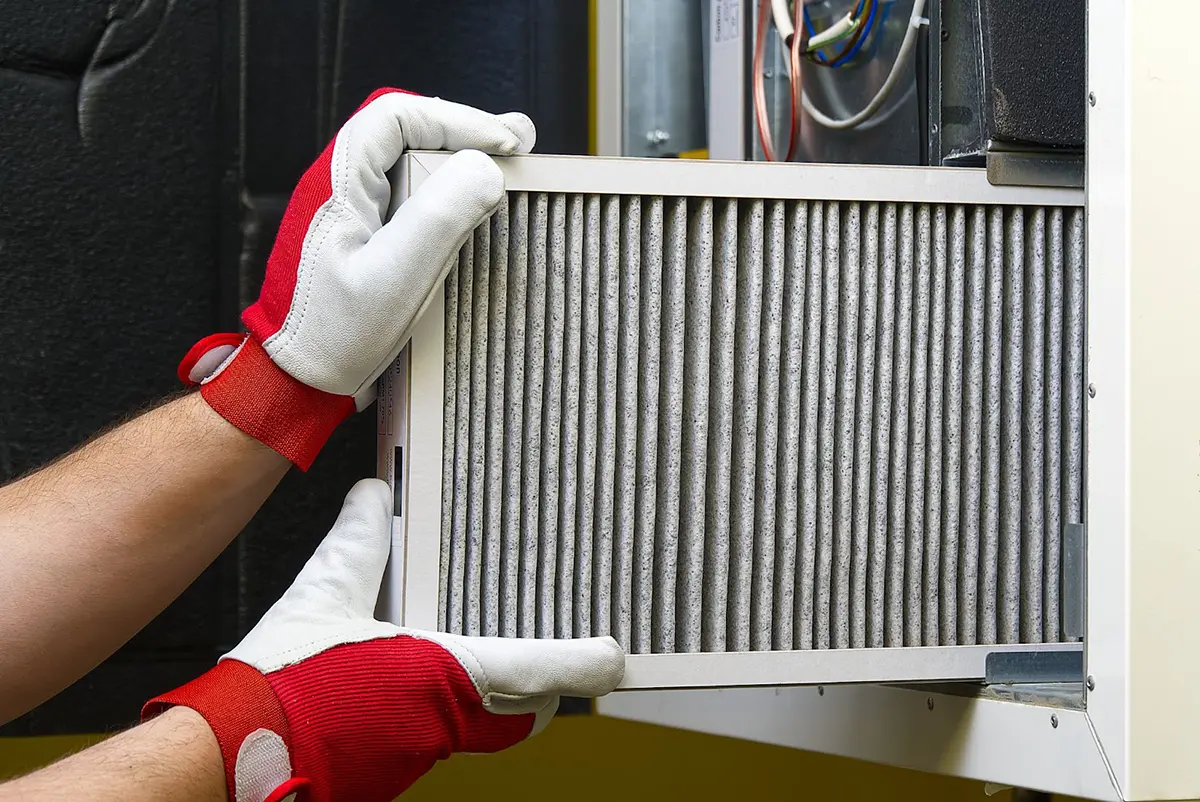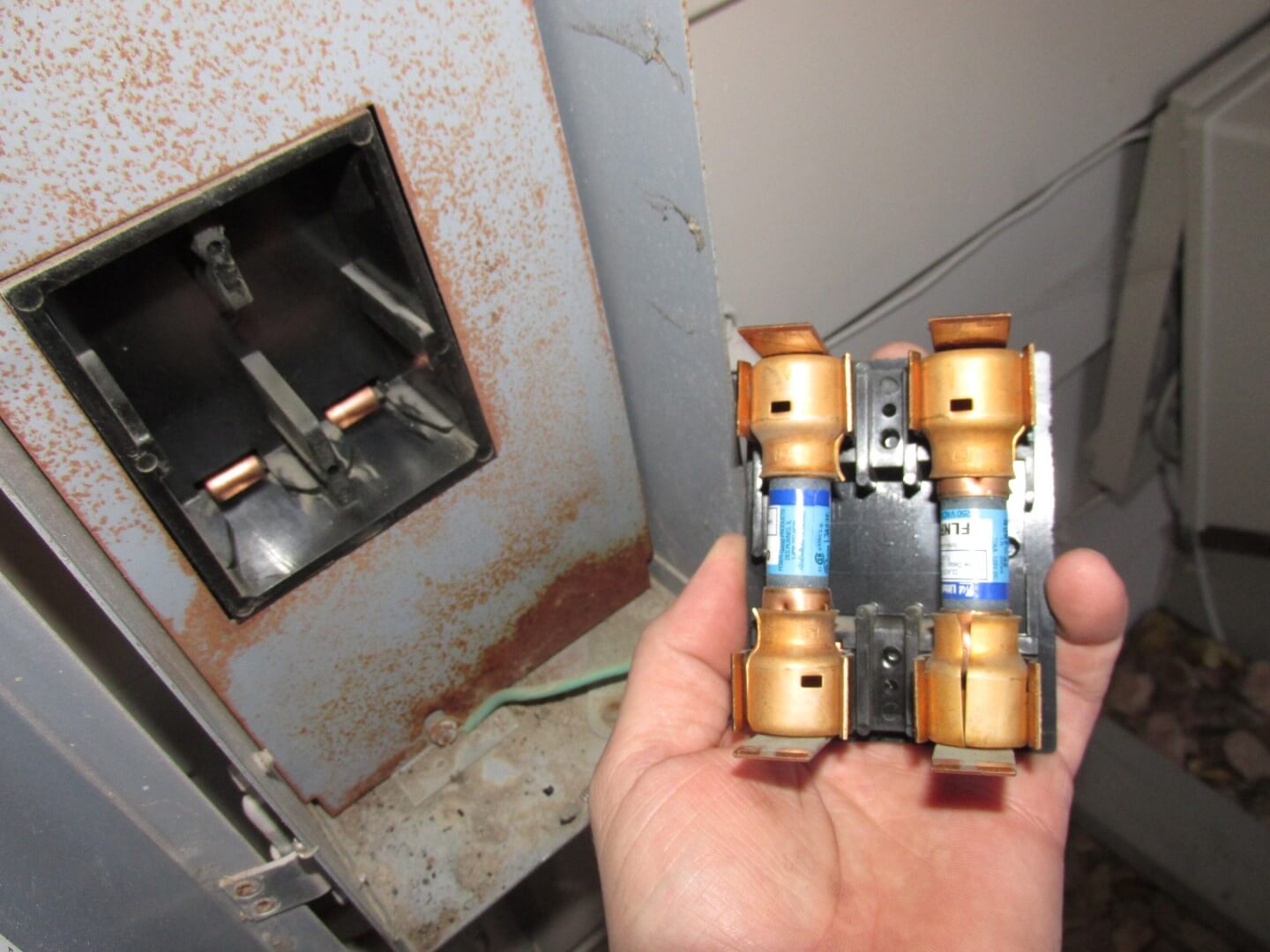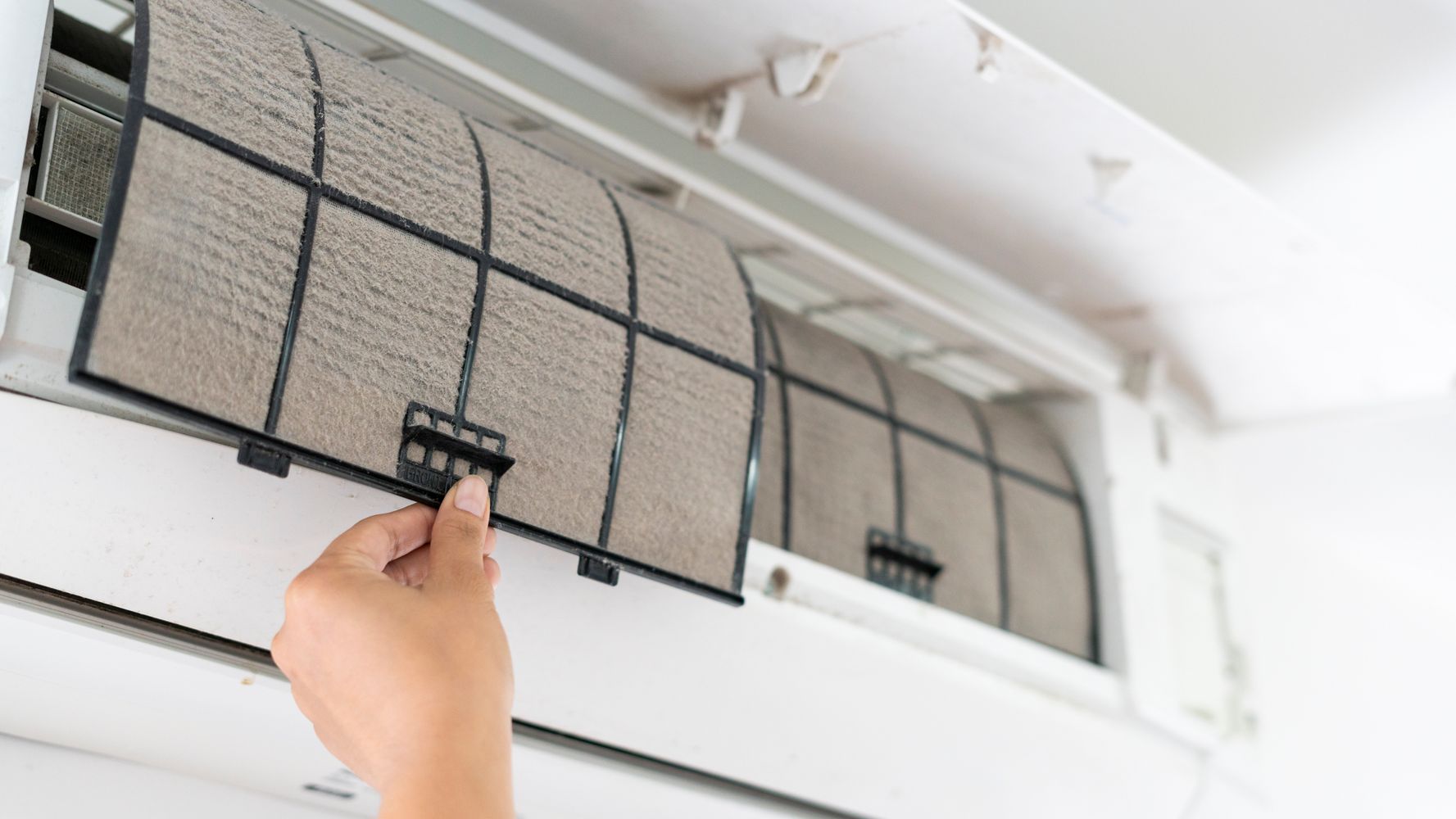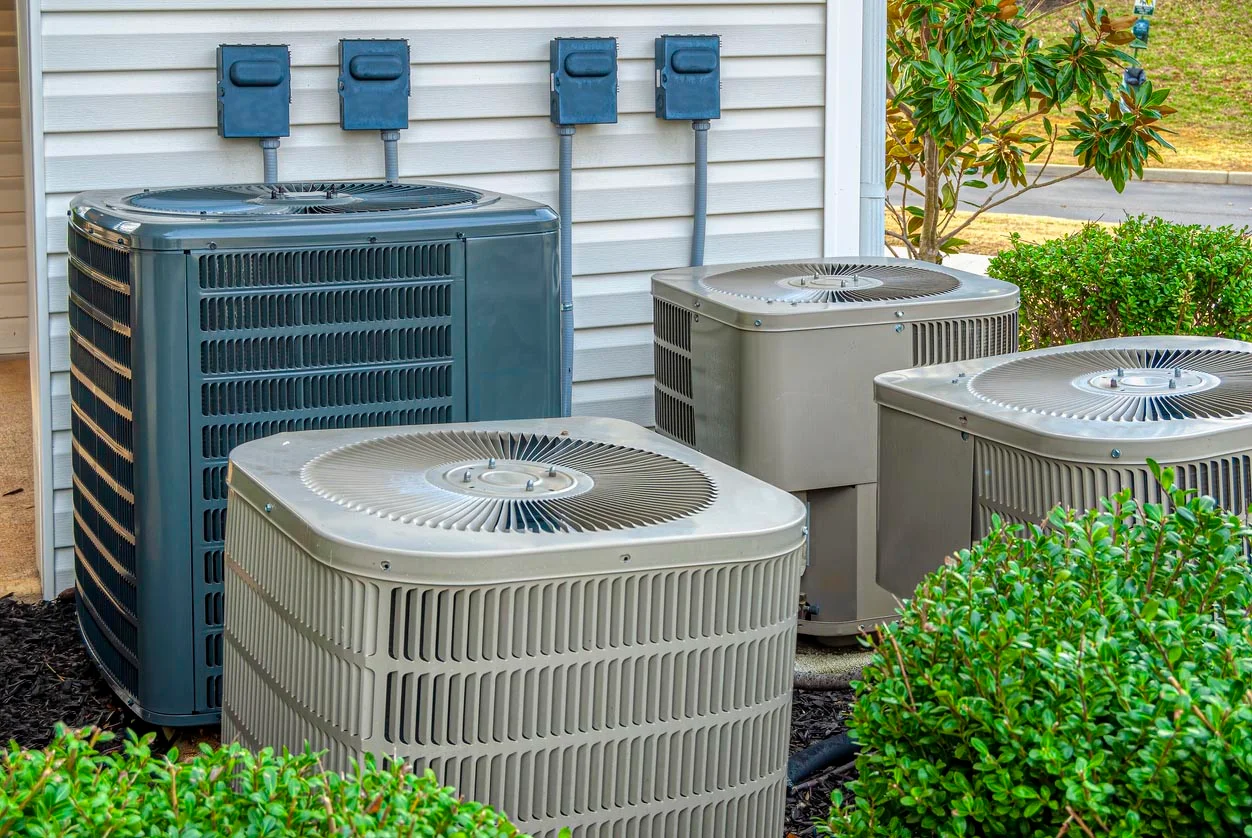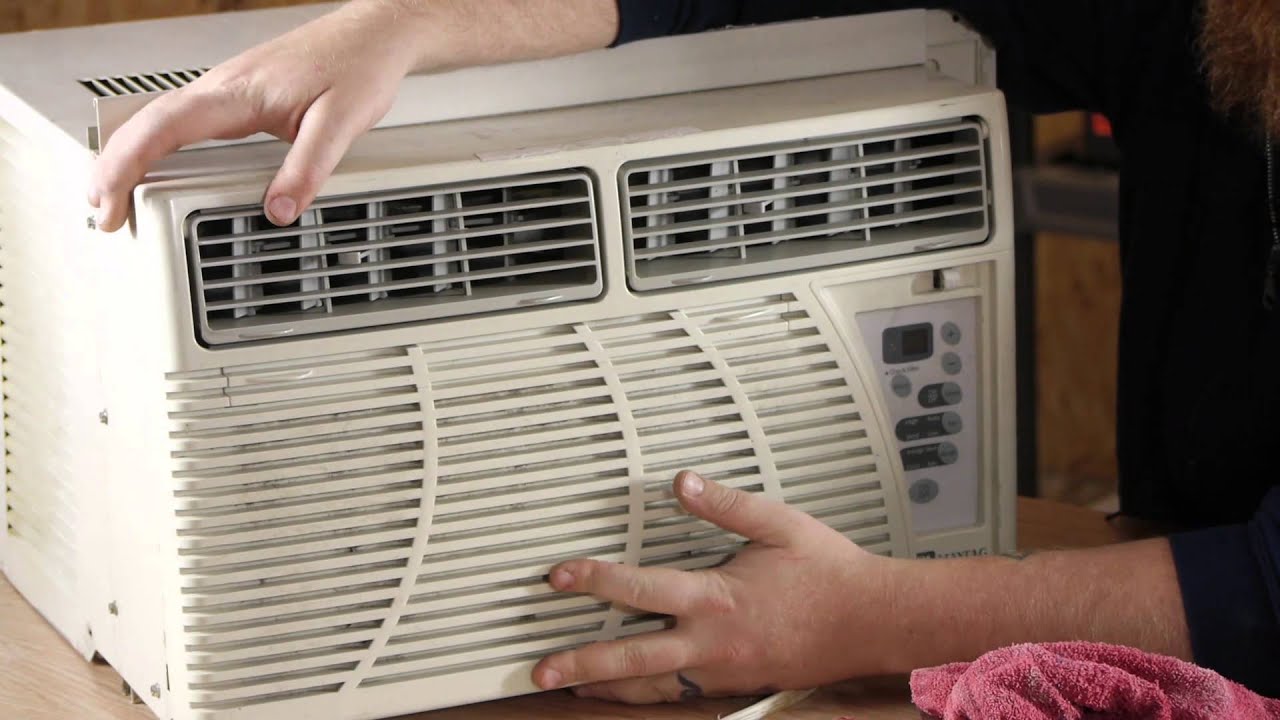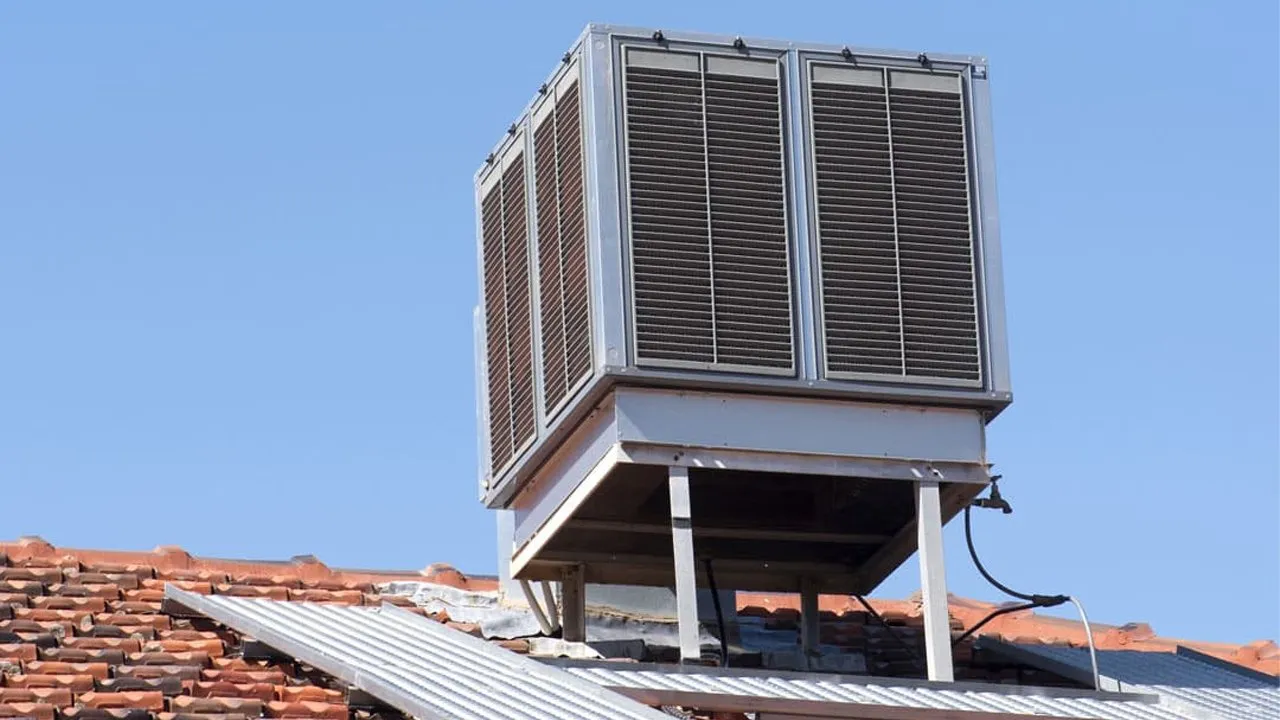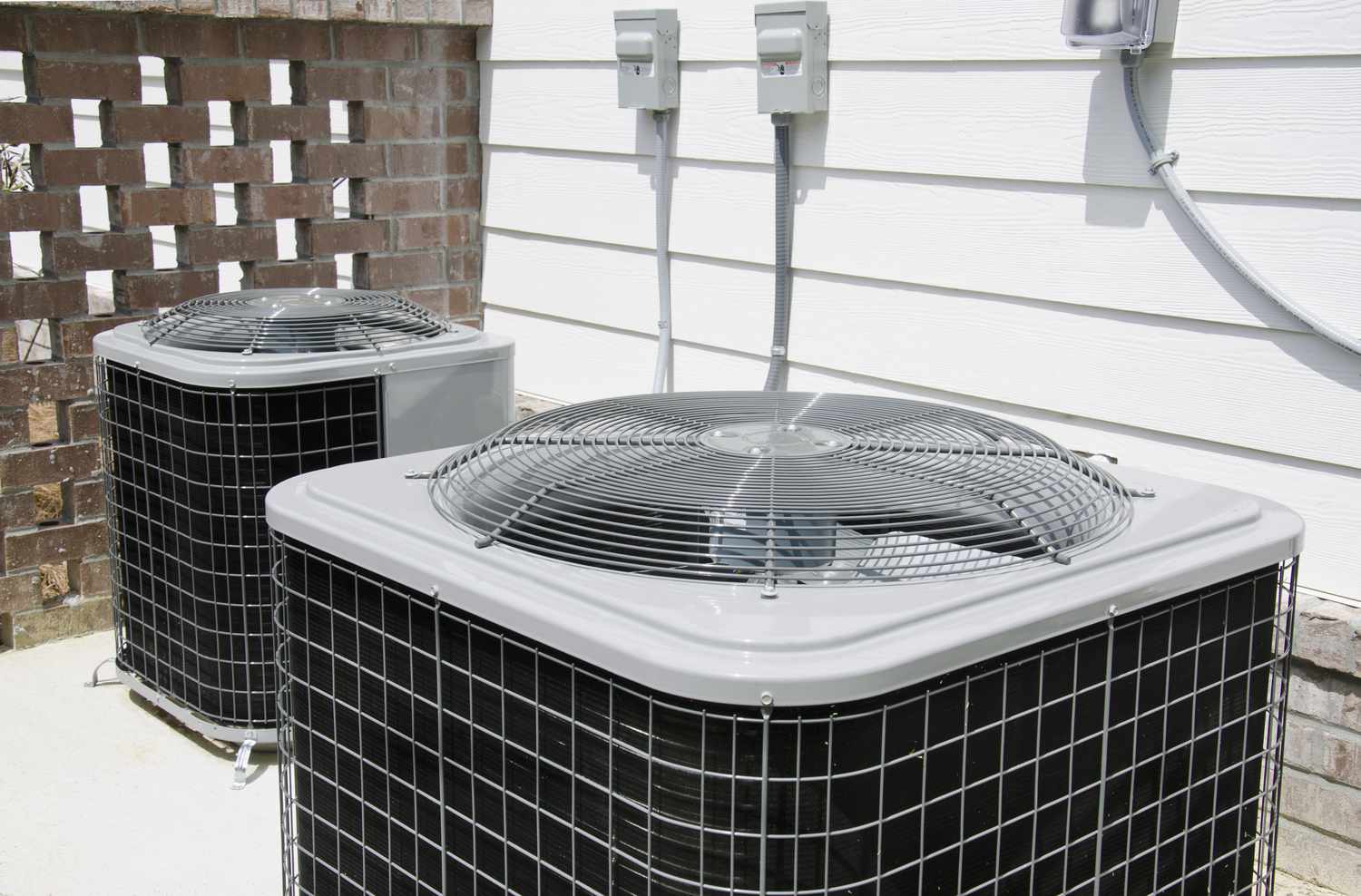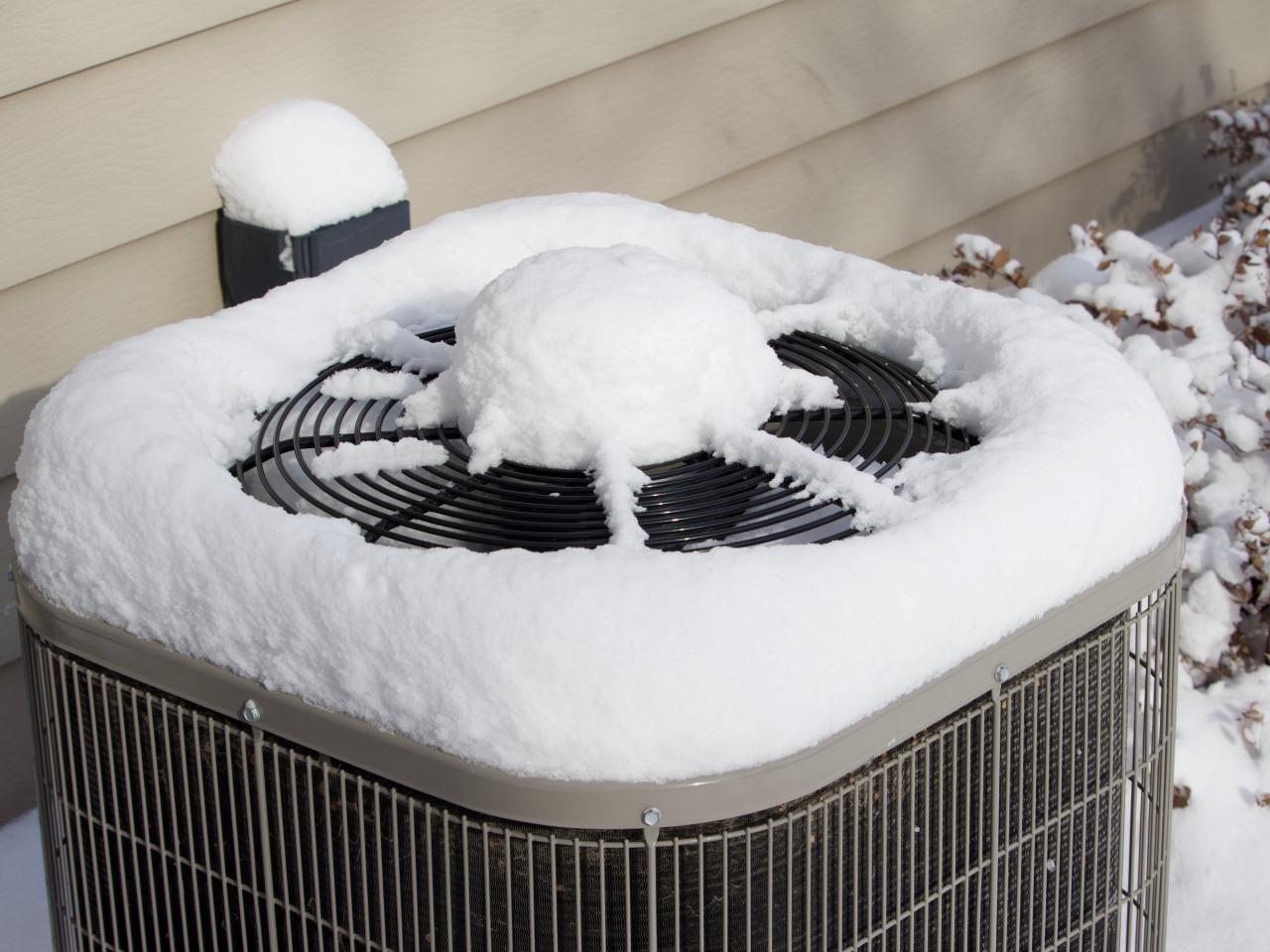Home>Home Maintenance>Where Is The Fuse For The Air Conditioner
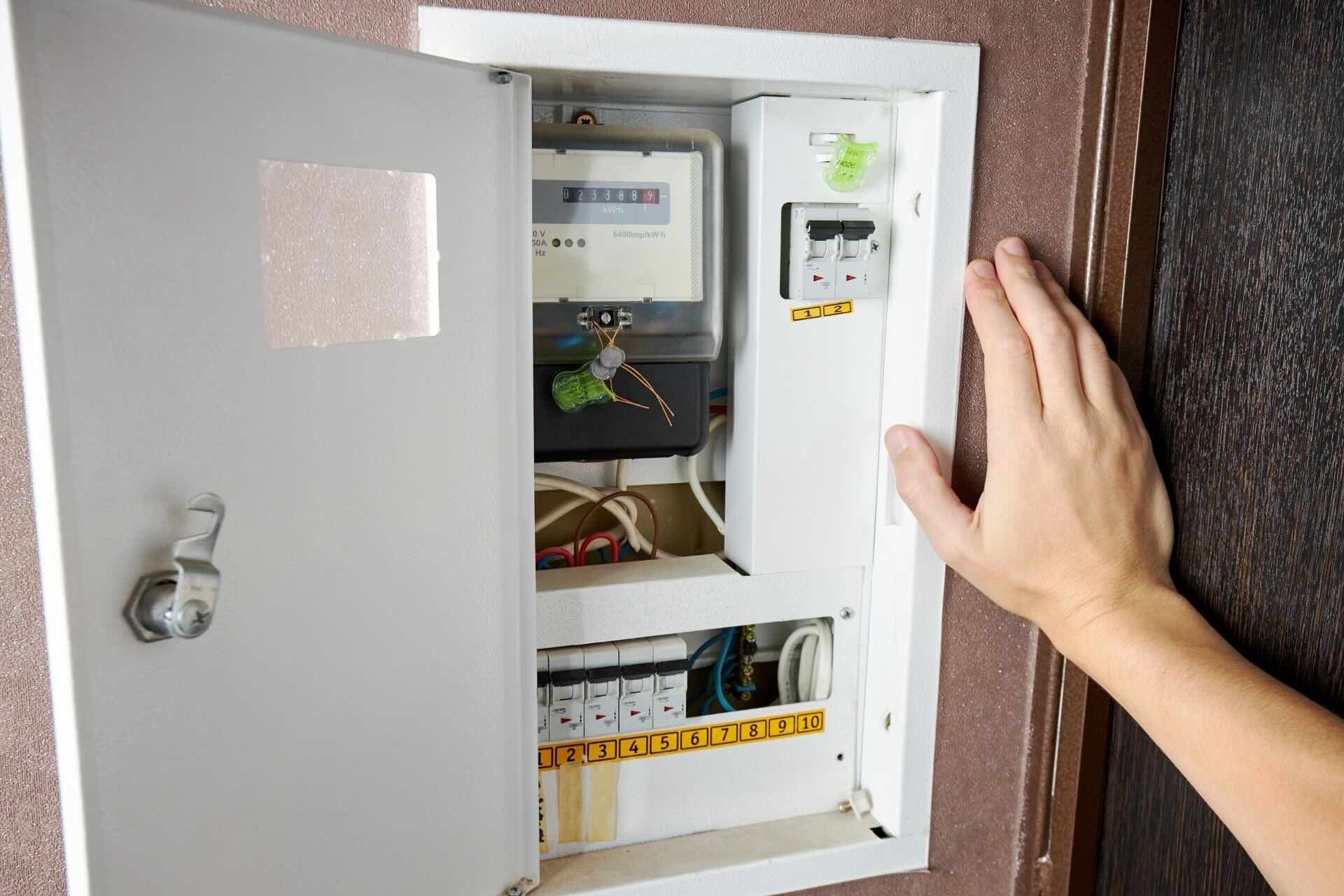

Home Maintenance
Where Is The Fuse For The Air Conditioner
Modified: August 27, 2024
Looking for the fuse for your air conditioner? Our home maintenance experts can help you locate and replace it quickly and efficiently. Contact us now!
(Many of the links in this article redirect to a specific reviewed product. Your purchase of these products through affiliate links helps to generate commission for Storables.com, at no extra cost. Learn more)
Introduction
Welcome to the world of modern home maintenance, where appliances and systems play a crucial role in our day-to-day lives. One such indispensable appliance is the air conditioner, which keeps us cool and comfortable during hot summer days. However, like any electrical device, there may come a time when the air conditioner malfunctions, leaving us sweating and frustrated.
In such situations, it is important to have a basic understanding of the various components of the air conditioner. One vital component to be aware of is the fuse. The fuse acts as a safety mechanism, preventing damage to the air conditioner and protecting against electrical fires. Knowing the location of the fuse is essential when troubleshooting any issues with the air conditioner.
In this article, we will delve into the importance of knowing the location of the fuse for the air conditioner. We will also explore common places to find the fuse in both vehicles and houses or buildings. Additionally, we will discuss some precautions to take while dealing with the fuse for the air conditioner.
So, let’s embark on this journey to discover where that little fuse is hiding and how it can save the day!
Key Takeaways:
- Knowing where the fuse is for your air conditioner can help you troubleshoot problems, prevent damage, and save time and money. It’s like having a secret tool to keep your cool air flowing!
- Whether in a vehicle or a building, finding the fuse is crucial for safety. Remember to turn off the power, use the right safety gear, and seek help if unsure. Stay cool and stay safe!
Read more: Where To Donate An Air Conditioner
Why is it important to know the location of the fuse for the air conditioner?
Knowing the location of the fuse for the air conditioner is crucial for a variety of reasons. Here are a few key reasons why it is important to have this knowledge:
- Troubleshooting: When your air conditioner stops working, one of the first steps in troubleshooting the issue is checking the fuse. A blown fuse could be the reason behind the malfunction. By knowing where the fuse is located, you can easily access it and determine if it needs to be replaced.
- Preventing further damage: If an electrical fault occurs in the air conditioner, such as a power surge or a short circuit, the fuse acts as a safeguard. It is designed to break the circuit and cut off the power supply, preventing any damage to the air conditioner and potentially avoiding costly repairs.
- Ensuring safety: The fuse not only protects the air conditioner but also ensures your safety. In the event of electrical issues, the fuse reduces the risk of electrical fires or shocks. By knowing the location of the fuse, you can quickly disconnect the power supply in case of emergencies, keeping yourself and your loved ones safe.
- Saving time and money: If you have to call a professional technician to repair your air conditioner, knowing the location of the fuse can save time and money. By locating the fuse and checking if it is the cause of the problem, you can rule out a simple fix before seeking professional help.
- Maintaining the air conditioner: Regular maintenance is necessary to ensure the longevity and efficiency of your air conditioner. During maintenance, accessing the fuse may be required to clean, inspect, or replace it. Being familiar with the fuse’s location makes this process much easier.
In summary, knowing the location of the fuse for the air conditioner is essential for troubleshooting, preventing further damage, ensuring safety, saving time and money, and maintaining the appliance. By having this knowledge, you can address potential issues promptly, enjoy a functioning air conditioner, and maintain a safe environment in your home or vehicle.
Common places to find the fuse for the air conditioner
The location of the fuse for the air conditioner can vary depending on whether you are dealing with a vehicle or a house/building. Here are some common places where you can find the fuse:
- In a vehicle: In most vehicles, the fuse box is located under the dashboard, near the driver’s side. Look for a removable panel or cover that grants access to the fuse box. Inside the fuse box, there will be multiple fuses, each labeled with its respective circuit. Refer to the vehicle’s manual or a fuse diagram to identify the specific fuse for the air conditioner.
- In a house or building: The fuse for the air conditioner in a house or building is typically located in the electrical panel or breaker box. This panel is usually situated in a utility room, basement, garage, or an outside area. Open the panel door to reveal a series of switches or circuit breakers. Look for a labeled switch or circuit breaker that corresponds to the air conditioner. The label may vary, but commonly includes terms like “AC,” “cooling,” or “HVAC.”
- In a central HVAC system: If you have a central air conditioning system that serves multiple rooms or zones, the fuse or circuit breaker might be located in a separate panel specifically dedicated to the HVAC system. Check utility rooms, mechanical rooms, or near the furnace or air handler to find this secondary panel. Look for a labeled switch or breaker that controls the air conditioning unit.
- Inside the air conditioner unit: In some cases, particularly with window or wall-mounted air conditioning units, the fuse may be located inside the unit itself. To access the fuse, you may need to remove the front cover or grille of the air conditioner. Refer to the manufacturer’s manual or instructions for the precise location of the fuse within the unit.
- Hidden or non-standard locations: Occasionally, the fuse for the air conditioner may be located in unconventional or hidden places. It is not uncommon for builders or technicians to place the fuse in less accessible areas, such as behind a false wall or within a service closet. If you cannot locate the fuse in the expected places, consult a professional or refer to the equipment’s manual for further guidance.
Remember, the specific location of the fuse may vary depending on the make, model, and age of the air conditioning system. It is always recommended to consult the respective manuals or seek professional assistance if you are unsure about locating the fuse.
Now that we have explored common places to find the fuse for the air conditioner, let’s move on to understanding how to locate the fuse in a vehicle and in a house or building.
How to locate the fuse for the air conditioner in a vehicle
Locating the fuse for the air conditioner in a vehicle is a relatively straightforward process. Follow these steps to find the fuse:
- Refer to the vehicle’s manual: The first step is to consult the vehicle’s manual. It provides valuable information about the location of the fuse box and the specific fuse for the air conditioner. The manual will also include a fuse diagram, which displays the layout and labeling of the fuses.
- Locate the fuse box: In most vehicles, the fuse box is situated under the dashboard, near the driver’s side. Look for a removable panel or cover that grants access to the fuse box. Some vehicles may have additional fuse boxes located in the engine compartment or trunk, so be sure to check all possible locations.
- Identify the air conditioner fuse: Once you have located the fuse box, open it and inspect the fuses. Look for the specific fuse that is labeled for the air conditioner or cooling system. It may be labeled as “AC,” “cooling,” or “HVAC.” Refer to the fuse diagram in the vehicle’s manual to confirm the correct fuse.
- Check the fuse: After identifying the air conditioner fuse, visually inspect it for any signs of damage or a blown element. A blown fuse will have a break in the metal strip inside. If the fuse appears intact, you can use a multimeter or a fuse tester to confirm its functionality.
- Replace the fuse if necessary: If the fuse is blown or faulty, replace it with a new fuse of the same amperage rating. It is crucial to use the correct amperage fuse to prevent any electrical issues or damage to the air conditioning system.
- Close and secure the fuse box: Once the fuse has been replaced, close the fuse box and secure the panel or cover. Ensure that it is properly sealed to protect the fuse and prevent any electrical hazards.
Remember, if you are unsure about locating or replacing the fuse for the air conditioner in your vehicle, it is always best to consult a professional mechanic or refer to the vehicle’s manual for detailed instructions specific to your make and model.
Now that we know how to locate the fuse in a vehicle, let’s move on to understanding how to find the fuse for the air conditioner in a house or building.
The fuse for the air conditioner is typically located in the fuse box under the dashboard or in the engine compartment. Check the owner’s manual for the exact location and use a fuse tester to check if it’s blown.
How to locate the fuse for the air conditioner in a house or building
Locating the fuse for the air conditioner in a house or building requires familiarity with the electrical panel or breaker box. Follow these steps to find the fuse:
- Identify the electrical panel: The electrical panel is typically located in a utility room, basement, garage, or an outside area. It is a metal box or cabinet with a door that conceals the circuit breakers or fuses. Locate the panel and ensure there is adequate lighting to see the labels.
- Open the panel door: Use caution when opening the panel door as it may have live electrical components. Use one hand to grip the panel door while keeping the other hand behind your back. Open the panel door slowly, and if there is resistance, do not force it open. If you are unsure about safety precautions or feel uncomfortable, it is best to consult a professional electrician.
- Locate the labeled switch or circuit breaker: Once the panel is open, you will see a series of switches or circuit breakers. Look for a switch or breaker that is labeled for the air conditioner. The label may vary, but commonly includes terms like “AC,” “cooling,” or “HVAC.” If you have a central HVAC system, the switch or breaker may be dedicated to the entire system rather than just the air conditioner.
- Check the status of the switch or breaker: Once you have located the switch or breaker, check its position. If it is in the “ON” position, it indicates that the circuit is active and supplying power to the air conditioner. If it is in the “OFF” position or in the middle, it means that the circuit is cut off and the air conditioner is not receiving power. Ensure that the switch or breaker is in the “ON” position before proceeding.
- Reset a tripped breaker: If the switch or breaker is in the “OFF” position, it may have tripped due to an electrical overload or fault. To reset a tripped breaker, switch it to the “OFF” position first and then back to the “ON” position. This should restore power to the air conditioner. If the breaker trips again, there may be an underlying issue that requires further investigation or professional assistance.
- Close the panel door: After locating the switch or breaker and ensuring it is in the correct position, close the electrical panel door securely. Ensure that it is properly latched to prevent any accidental contact with the live electrical components.
It is important to note that if you are unfamiliar with electrical systems or unsure about locating or handling the fuse for the air conditioner, it is always best to consult a licensed electrician or professional for assistance. Electrical work can be dangerous if not done correctly.
Now that we know how to locate the fuse in a house or building, let’s move on to discussing some precautions to take while dealing with the fuse for the air conditioner.
Precautions while dealing with the fuse for the air conditioner
When dealing with the fuse for the air conditioner, it is important to follow certain precautions to ensure your safety and prevent any damage to the electrical system. Here are some essential precautions to keep in mind:
- Power off the air conditioner: Before accessing the fuse, make sure to turn off the power supply to the air conditioner. This can be done by switching off the circuit breaker dedicated to the air conditioner in the electrical panel or by unplugging the unit if applicable. This precautionary measure will minimize the risk of electrical shocks or accidents.
- Check for signs of damage: Inspect the fuse visually for any signs of damage, such as a blown element or discoloration. If the fuse appears damaged or burnt, do not attempt to replace it yourself. It is advisable to seek the assistance of a qualified electrician who can safely handle the replacement.
- Use appropriate safety gear: When dealing with electrical components, wear safety gear such as gloves and safety goggles to protect yourself from potential hazards. This will minimize the risk of injury or electric shock.
- Use the correct amperage rating: Ensure that you are using the correct amperage-rated fuse when replacing a blown fuse. Using a fuse with a higher amperage rating can overload the circuit and potentially lead to electrical damage or fires. Refer to the manufacturer’s instructions or consult a professional if you are unsure about the appropriate amperage rating.
- Avoid overloading the circuit: Do not overload the circuit by plugging in too many electrical devices or appliances on the same circuit as the air conditioner. Overloading can cause the circuit to trip or overheat, potentially damaging the fuse or other electrical components.
- Consult a professional if unsure: If you are uncertain about any aspect of dealing with the fuse for the air conditioner, it is always best to consult a professional electrician or technician. They have the knowledge and expertise to handle electrical systems safely and effectively.
- Keep children and pets away: Ensure that children and pets are kept away from the area where you are working on the fuse. This will prevent any accidents or injuries from occurring.
- Follow local electrical codes and regulations: Adhere to the electrical codes and regulations specific to your region when dealing with electrical components. This ensures compliance with safety standards and minimizes the risk of electrical hazards.
Remember, electrical work can be dangerous if not done properly. If you are unsure or uncomfortable with any aspect of dealing with the fuse for the air conditioner, it is recommended to seek professional assistance to avoid any potential risks or damage.
With these precautions in mind, you can handle the fuse for your air conditioner safely and effectively. Now, let’s wrap up and summarize our key points.
Conclusion
In conclusion, knowing the location of the fuse for the air conditioner is essential for troubleshooting, safety, and proper maintenance. Whether you’re dealing with a vehicle or a house/building, understanding where to find the fuse can save you time, money, and potential headaches.
By knowing the location of the fuse, you can quickly address any issues with your air conditioner. Troubleshooting becomes easier when you can check whether a blown fuse is the cause of the malfunction. Additionally, locating the fuse allows you to prevent further damage and ensure the safety of yourself and those around you.
In vehicles, the fuse box is typically found under the dashboard, with the specific fuse for the air conditioner labeled accordingly. In houses or buildings, the fuse is usually located in the electrical panel or breaker box, with proper labeling indicating its purpose. Taking precautions while dealing with the fuse, such as turning off the power and using appropriate safety gear, is essential to protect yourself from electrical hazards.
If you are unsure about locating or handling the fuse, it is always advisable to seek assistance from a professional electrician or technician. Electrical work can be complex and potentially dangerous without proper knowledge and experience.
Remember to obey electrical codes and regulations specific to your region, and always practice caution to prevent accidents or further damage. By following these guidelines, you can effectively address issues with the air conditioner, maintain a comfortable environment, and keep everyone safe.
We hope this article has provided you with valuable information on the importance of knowing the location of the fuse for the air conditioner. Stay cool, stay safe, and enjoy the comfort of a well-functioning air conditioner!
Frequently Asked Questions about Where Is The Fuse For The Air Conditioner
Was this page helpful?
At Storables.com, we guarantee accurate and reliable information. Our content, validated by Expert Board Contributors, is crafted following stringent Editorial Policies. We're committed to providing you with well-researched, expert-backed insights for all your informational needs.

